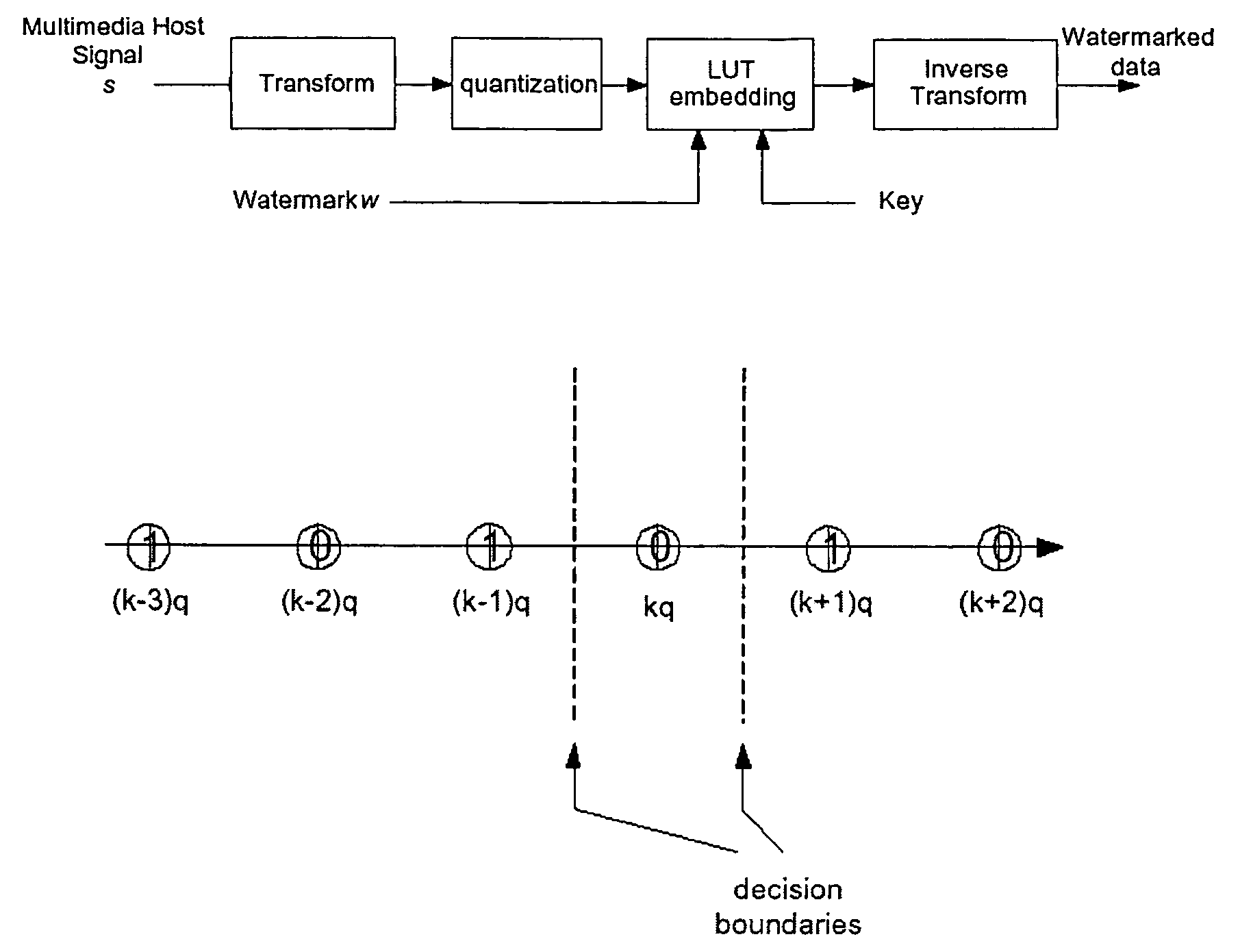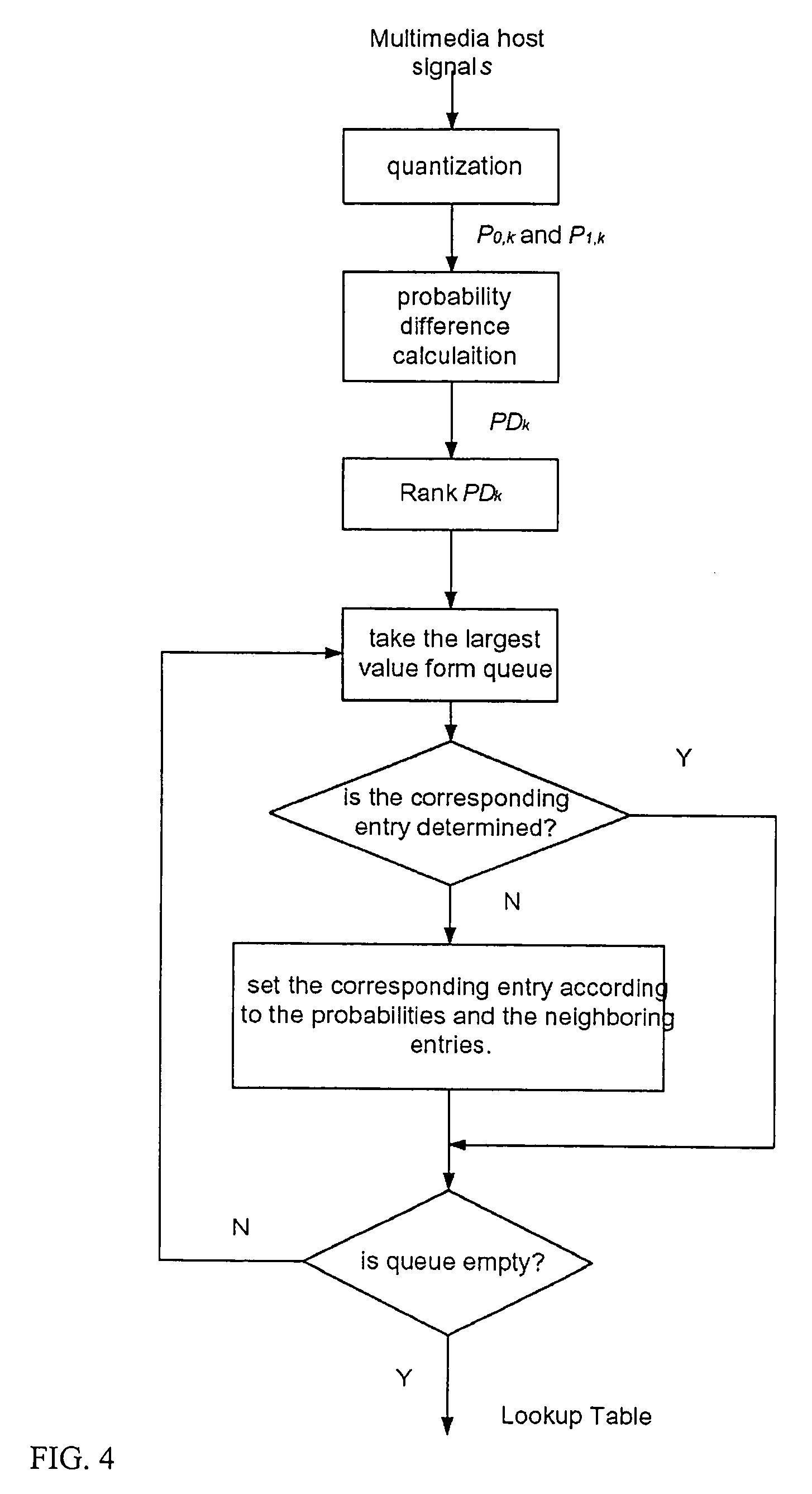Watermark embedding and detecting methods, systems, devices and components
a detection method and watermark technology, applied in image data processing, character and pattern recognition, instruments, etc., can solve the problems of % accuracy, embedded information is typically perceived as noise, and is fragile to intentional attacks
- Summary
- Abstract
- Description
- Claims
- Application Information
AI Technical Summary
Benefits of technology
Problems solved by technology
Method used
Image
Examples
case 1
[0117] {Lookup((k−1)q)=Lookup(kq)=b and Lookup(kq)≠{Lookup((k+1)q)};
case 2
[0118] {Lookup((k−1)q)≠Lookup(kq) and Lookup(kq)={Lookup((k+1)q)}=b};
case 3
[0119] {Lookup((k−1)q)≠Lookup(kq)=b and Lookup(kq)=b≠Lookup((k+1)q)}.
[0120]In all the cases, further distortion will be introduced. If it is the first case, the samples of s which are in the quantization cell of [(k−1 / 2)q, (k+1 / 2)q] have to be rounded to (k+1)q. The distortion is
[0121]DCase1(s)=∫(k-1 / 2)q(k+1 / 2)qs-(k+1)q2f(s)ⅆs=Dkq+q2∫(k-1 / 2)q(k+1 / 2)qf(s)ⅆs-2q∫(k-1 / 2)q(k+1 / 2)q(s-kq)f(s)ⅆs(7)
[0122]Similarly, in the second case, the samples in k-th cell have to be mapped to (k−1)q. This provides:
[0123]DCase2(s)=Dkq+q2∫(k-1 / 2)q(k+1 / 2)qf(s)ⅆs+2q∫(k-1 / 2)q(k+1 / 2)q(s-kq)f(s)ⅆs(8)
[0124]In the third case, two nearest quantization points (k+1)q and (k−1)q correspond to the desired bit simultaneously, then the original features in the range of [(k−1 / 2)q, kq] will be rounded to (k−1)q, and the features in the other half interval [kq, (k+1 / 2)q] will be mapped to (k+1)q. The distortion will be composed by two parts:
[0125]DCase3(s)=∫(k-1 / 2)...
PUM
 Login to View More
Login to View More Abstract
Description
Claims
Application Information
 Login to View More
Login to View More - R&D
- Intellectual Property
- Life Sciences
- Materials
- Tech Scout
- Unparalleled Data Quality
- Higher Quality Content
- 60% Fewer Hallucinations
Browse by: Latest US Patents, China's latest patents, Technical Efficacy Thesaurus, Application Domain, Technology Topic, Popular Technical Reports.
© 2025 PatSnap. All rights reserved.Legal|Privacy policy|Modern Slavery Act Transparency Statement|Sitemap|About US| Contact US: help@patsnap.com



